
Review on Effortlessly Master DIY Painting With HomeRight Finish Max HVLP Electric Spray Gun - 3 Spray Patterns And Superior Brass Tip by Robert Fulce

Wonderful little airless sprayer and a recommended stain
I used this airless sprayer in northern Minnesota to stain the outside of our 5-room cabin, a small shed, and some assorted small wooden pieces. The majority of the siding on the cabin and shed consisted of 4-5 inch diameter logs (pine or spruce) cut lengthwise that were at least 50-years old and had been last painted 25 years ago with a high VOC oil-based stain. This older type of stain is now banned in many states because of the high VOC (volatile organic compound) content, but can still be custom ordered in areas, like MN, where it is still legal. It is a wonderful product for durability and application, but I chose to use a more environmnetally friendly, water-based, acryilc stain. Needless to say, this was a challenging staining project for both the sprayer (it's a bigger project than this sprayer is designed for) and the stain (applying a water-based stain over an aged oil-based stain on a difficult surface). I was delighted with the initial results and with the results 3-months later. I will update my review next year, if there are any significant changes.The stain I used was the Sherwin Williams Woodscapes acrylic stain. I used the dark opaque base stain that was tinted to the desired color (a Navajo red-like color). This is a self-priming stain that is moderately viscous and designed for siding. It has some mold and mildew resistance built in. I greatly appreciated the self-priming nature of the stain, because it meant that I did not need to apply a primer, let it dry, and then apply the stain, so it saved a lot of time. The stain was also a great thickness that was easy to apply and gave great coverage and penetration with a brush in the places where using a brush, not the sprayer, was simpler or more practical. When using the sprayer the stain also went on well, penetrated the numerous cracks & grooves in the siding, and gave good coverage. I highly recommend this stain for these types of projects. It's a great product-at least after 3-months. I'll update my review if this changes in a year.On to the "HomeRight C800971.A Super Finish Max Extra Power Painter, Home Sprayer Hvlp Spray Gun for Painting Projects"! I boght the somewhat more expensive "extra power" version of this sprayer for 2 reasons. First, I knew I would be using a stain with a moderate viscosity and I was concerned that the "regular power" version of this sprayer, might not be able to manage the viscosity of the stain I was going to use. And second, this sprayer had a wider range of droplet sizes to which it could be adjusted. I'm glad I spent the extra $30 for the "extra power" version. This sprayer allows the user to choose between 3 included color-coded tips that provide flexibility beyond the droplet size "adjustment dial" built into the sprayer. The combination of tip selection and the "adjustmetnt dial" allows the user to use a essentially any common paint or stain and to produce different spray patterns and droplet size to adjust the quality of the finish. If the three included tips don't provide you with the desired finish, you can buy a kit that includes 3 additional tips (Homeright C900110 Spray Tip Multi Pack for Super Finish Max (Orange, Yellow, Black)) . I used the red tip designed to give a courser finish, but quicker application. I think one of the tips designed to provide a "finer" finish would likely have stuggled to use this stain, but I did not test them with the stain. The first day I applied 3.5-4 gallons of stain to finish the outside of the cabin. I had to refill the reservoir on the sprayer 15 or 16 times to complete the task and applying the stain took about 4-hours, so a full reservoir is good for about 10-15 minutes of spraying-including brief pauses to move the ladder, adjust my grip, or change the spray pattern and longer breaks to occasionally clean the tip assembly. The reservoir is easy to refill, so I was fine with the sprayer's limited volume. If you have a bigger job or are in more of a hurry, I suggest going with a higher capacity sprayer with a hose that you insert directly into the 5-gallon container of stain/paint. I regularly changed the spray pattern from a horizontal line to a veritcal line (a circular pattern is the third option avaiable) depending on the orientation of the surface I was staining-switching between spray patterns only took a few seconds. I needed to stop after each 5-6 fills of the reservoir to partially disassemble the tip assembly on the sprayer and clear it when it became clogged with drying stain. This process took 5 minutes each time, but most sparyers require periodic clearing of the tip during use, so this was not a problem for me for this project. Gradul plugging of the tip also required that I periodically increased the droplet size and courseness of the finish by rotating the "adjustment dial" in order to keep working. Again, this was not a problem for this project., but may be a problem for larger projects. Cleaning the sprayer after the days work took me more than an hour, but I only had cold water form a hand pump (no, the cabin does not have indoor plumbing, but it does have electricity!) to clean the sprayer parts and to clean out the reservoir. Cleaning would have been much faster if I had access to an unlimited supply of warm soapy water. It is eesential to thoroughly clean the internal parts of the sprayer after each use to prevent problems in the future. If you are planning to change colors of paint or stain frequently, be sure to allow time for cleaning the sprayer for each change.The next weekend I spent the second day staining the shed and the smaller wooden pieces. These pieces were again pretty old and the wood well cracked from drying. I used 2-2.5 gallons for these projects. Pretty much everything I said above was true for this day also, however, these types of smaller projects are really what this sprayer is designed for. It worked superbly. I had to stop once to clear the red tip after the 5th fill of the reservoir. Clean-up was still a time-consuming step, but well worth the time saving of using a brush or roller.Other comments:1. Overspray was not a significant problem with this sprayer. Just don't spray on a super windy day. You still must tape or cover any surfaces (like windows) that you don't want paint/stain droplets on and wear appropriate personal protective equipment-especially to protect your eyes and respiratory tract.2. Be sure to wear proper personal protective equipment when using ANY sprayer. For me, this included a hat (kept the spray out of my hair and parts of my head), safety glasses (when I looked at mine during the work I saw tiny droplets of stain on them,so I was glad to have the safety glasses), and a respirator that covers your nose and mouth. A cheap paper dust mask does NOT provide adequate protection from the fine mist produced by a sprayer. Spend $25-30 to get a decent respirator with replaceable cartridges. Your nose, mouth and lungs will appreciate it! You could add gloves and a long-sleeve shirt if desired. I skipped the gloves and shirt and got some wind-blown spray on my hands, but less on my arms. Both my hands and arms cleaned up pretty quickly-even with just cold water. I suggest safety glasses like these (https://www.amazon.com/Pyramex-Fortress-Safety-Eyewear-Clear/dp/B003UY9C0C/ref=sr_1_32?s=hi&ie=UTF8&qid=1533890807&sr=1-32&keywords=safety+glasses) that don't easily fog up and a respirator like this (https://www.amazon.com/dp/B0009F5KDS/ref=twister_B01MUGE5FK?_encoding=UTF8&psc=1).3. It is ESSENTIAL that you properly prepare the surface before applying the stain/paint. Failing to prepare the surface properly will give you poor results, REGARDLESS of the paint/stain you use and regardless of whether you use a sprayer, brush, or roller. You will likely spend at least as much time preparing the surface as applying the stain/paint, so plan accordingly. For this project, I used a scrub broom to knock down cobwebs, spider egg cases, etc. I then scrubbed the wooden surfaces with bleach water (using a deck wash or borax would also work), then rinsed the surfaces with plain water, and finally let the surface dry for a few days. I couldn't use a pressure washer, because I didn't have access to pressurized water, but that would have saved time. There were several pieces of siding that had areas where dry rot, insects, or lichens had decayed the wood under the old stain. I removed as much of these "spungy" areas as possible with the scrub prush and for particularly bad areas a wood chisel and had to replace some of the siding boards completely. The prep took a lot of time, but I cannot emphasize how important it is to apply stain/paint to clean, dry, decay-free surface. As mentioned above, skipping the prep step will give you poor results including stain/paint coming up within weeks, months, or possibly a year.4. The sprayer is pretty light weight, so almost anyone can use it.5. One negative with the sprayer is the small wrench they provide to install and remove the 2 metal parts of each tip. In a word, the wrench sucks. It's too small to provide much leverage (which does prevent you from over-tightening the two pieces of the tip when you're installing the tips) and it "stripped" out pretty quickly making it useless for removing the tips once a lttle stain/paint had started to dry in the tip. I quickly resorted to using a pair of wrenches with a longer handle to loosen the tip pieces.Summary: I pushed the limits of this sprayer with this project, but so far the results are fantastic. Cleaning the sprayer is a bit of a pain, but the prep work is the same regardless of whether you use a brush, roller, or sprayer. In less than 2 afternoons I stained an area that would probably have taken 4 or 5 full days to do with a brush and the brush would probably not have provided as good of coverage. I expect that completing smaller projects with this sprayer could give great finishes. I highly recommend this sprayer (and the stain).
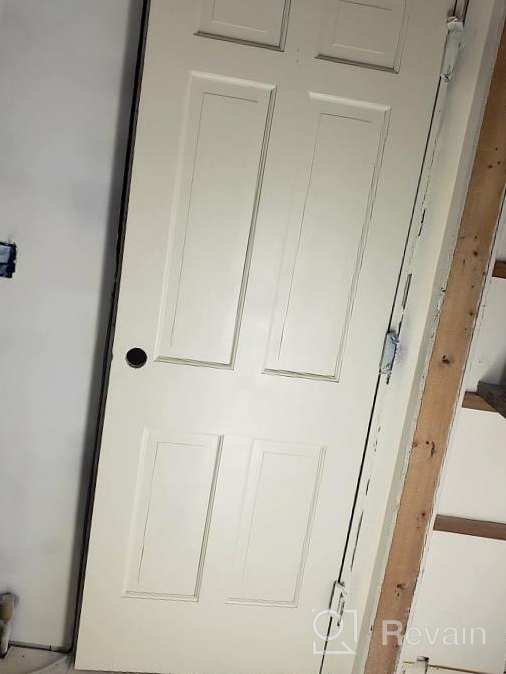
- Tools & Home Improvement
- The spray gun requires a power outlet, which limits mobility and convenience during use
New products
Comments (0)
Similar reviews
Top products in 🖌️ Painting Supplies & Tools
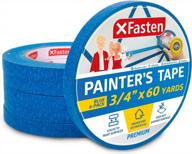
XFasten Blue Painters Tape, Multi-Use, 3/4 Inches X 60 Yards (Pack Of 6) Blue Painters Masking Tape Bulk - Sharp Edge Line Technology, Produces Sharp Lines Residue-Free Wall Trim Tape

31 Review
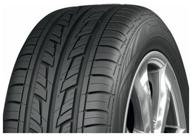
Cordiant Road Runner 185/65 R15 88H summer

72 Review

AOBEN 750W HVLP Paint Sprayer With 4 Nozzles And 1000Ml Container - Ideal For Home And Outdoor Painting Projects (Blue)

32 Review
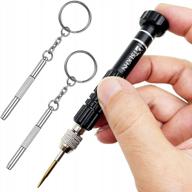
Get Precision With PTSLKHN 5-In-1 Eyeglass Screwdriver Kit For Glasses, Electronics, Cellphone And More

33 Review
Another interesting products
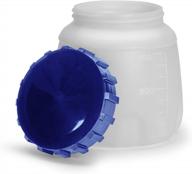
Upgrade Your Paint Spraying Game With HomeRight'S 27 Oz. Container & Lid For Finish Max Sprayer

9 Review
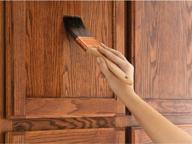
Minwax Water Based Helmsman Spar Urethane 1 Quart Gloss: Ultimate Protection for Wood Surfaces

9 Review

SamaN Interior Water Based Wood Stain - Natural Stain For Furniture, Moldings, Wood Paneling & Cabinets (Black TEW-108-12, 12 Oz)

28 Review

🐝 Daddy Van's Unscented Beeswax Furniture Polish: Non-Toxic, Odorless Wood Wax for Nourishing Furniture, Antiques, Cabinets, and Butcher Block

9 Review

